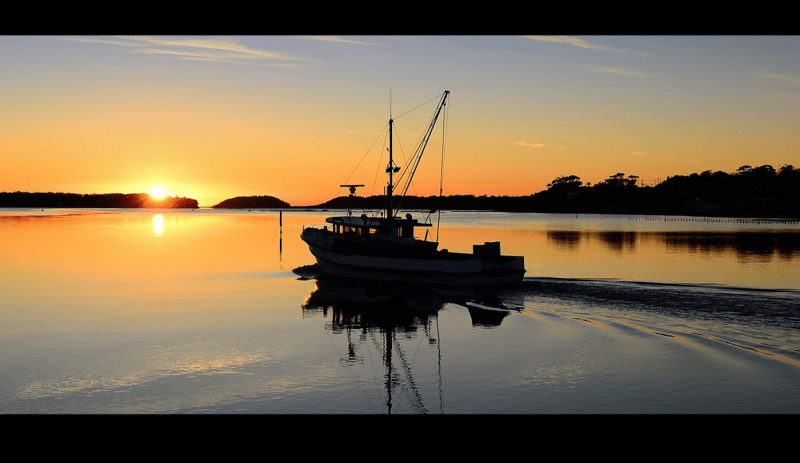A new dawn for aquaculture in the Pacific Northwest
In the debate over global warming and ocean acidification, most reasonable people say we should listen to NOAA scientists and give credence to NOAA data. Yet, regarding aquaculture, many of these same people don’t listen to NOAA scientists or give credence to their data.
Guest Commentary
By John Dentler and Jeanne McKnight
The United Nations Food and Agriculture Organization (FAO) notes that 90 percent of the world’s fisheries are at capacity or have been overfished. By the year 2030—a mere decade away—the world population will reach 8.3 billion. That’s 8.3 billion mouths to feed with a decreasing amount of arable land for agriculture.
Meet the solution: The Blue Revolution.
Around the world, countries like Norway, Scotland, New Zealand, Ecuador, Brazil, India, Thailand and China—to name a few—have embraced aquaculture for decades. In the case of Asia, aquaculture has been around for thousands of years producing locally farmed protein and, more recently, robust economic development.
Unfortunately, the United States has fallen behind many countries, currently ranking #16 in aquaculture production.
The Northwest Aquaculture Alliance (NWAA) believes it is time for the United States, specifically our West Coast region, to embrace aquaculture as a public health, economic development, and food security strategy.
Research demonstrate the correlation between regular seafood consumption and human health. Diets low in seafood result in chronic health issues such as cardiovascular disease, contributing to 84,000 preventable deaths in the United States annually. Consumers need to eat more seafood; aquaculture makes seafood accessible and affordable.
Farming fish, shellfish, and seaweed also supports community economic development. According to the National Oceanic and Atmospheric Administration (NOAA), fish harvested from aquaculture around the globe had an estimated first-sale value of US $160.2 billion, divided among finfish, shellfish, and crustaceans—using less than 4 percent of the ocean.
In the debate over global warming and ocean acidification, most reasonable people say we should listen to NOAA scientists and give credence to NOAA data. Yet, regarding aquaculture, many of these same people don’t listen to NOAA scientists or give credence to their data. This double standard sets back aquaculture, hurts our rural communities, and harms the overall health of consumers.
Now we are, once again, at a crossroads in Washington as Cooke Aquaculture Pacific seeks to gain the state’s approval to raise all-female sterile rainbow trout and, in a joint venture with the Jamestown S’Klallam Tribe, rear native black cod and sterile rainbow trout.
We support these efforts.
In the United States, most people do not consume the amount of seafood needed for good health. A significant benefit of aquaculture is that it delivers a nutritious product that consumers want at a price they can afford. We cannot harvest more wild seafood. We must import our seafood or, conversely, produce more of it here in the USA. We believe Cooke’s proposal and the Jamestown Tribe’s proposal is in the best overall interests, not just of the state, but also the rural communities where family-wage jobs are desperately needed.
That is not to say that aquaculture, like any human activity, doesn’t have an environmental footprint, but we work hard and must continue to work hard to control, mitigate, and reduce that footprint. In fact, fish farming has the lowest environmental footprint of any animal production.
Aquaculture is also highly regulated at the local, state and federal level. Here are just a few federal laws governing “water farming”:
• Animal Health Protection Act;
• Animal Medicinal Use Drug Clarification Act;
• Clean Water Act;
• Coastal Zone Management Act;
• Endangered Species Act;
• Federal Food Drug and Cosmetic Act;
• Federal Insecticide, Fungicide, and Rodenticide Act;
• Federal Water Pollution Control Act (Clean Water Act);
• Lacey Act;
• Magnuson-Stevens Fishery Conservation and Management Act;
• Marine Mammal Protection Act;
• Migratory Bird Protection Act;
• National Environmental Policy Act;
• Outer Continental Shelf Lands Act; and
• Rivers and Harbors Act.
We invite those who are interested in aquaculture, pro or con, to contact us to identify areas of mutual interest and to discuss solutions that will benefit the region, help its people, including Tribal Members, and benefit from our shared marine and aquatic environment.
It’s time for Washington and the Pacific Northwest region to join the Blue Revolution. Let’s work together to make it happen.
John Dentler earned his JD from Seattle University and is President of the Northwest Aquaculture Alliance (www.nwaquaculturealliance.org). He is also a senior adviser to Troutlodge, the world’s largest producer of eyed trout eggs. Each year Troutlodge produces and sells about 500 million trout eggs worldwide, including sales to Cooke Aquaculture.
Jeanne McKnight, Ph.D., has been involved in strategic communications and public affairs for 25 years, specializing in fisheries and aquaculture, both regionally and globally. She currently serves as the Executive Director of NWAA.
(Image courtesy of Cooke Inc.)

